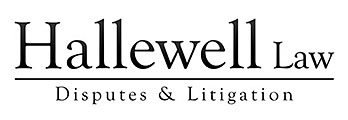There is an “implied undertaking” – which often times eludes even the most seasoned of lawyers – that material produced under compulsion cannot be used for an ulterior or collateral purpose and only for the purpose for which it was produced.
If you’re a legal practitioner in the midst of advising or assisting your client make a complaint to, (for example), a government body, about an opposing litigant, using material derived from a compulsory process (such as through disclosure under the rules of Court) your client (or you) could be exposed to a finding of contempt of Court.
What is the scope and rationale of the undertaking?
The undertaking is derived from the UK House of Lords decision in Harman v Secretary of State for the Home Department (1983) 1 AC 280 (Harman) and is thereby referred to as the “Harman undertaking”.
 The majority of Hayne, Heydon & Crennann JJ in the Australian High Court decision in Hearne v Street (2008) 235 CLR 125, adopted the undertaking, or at least the obligations first formulated in Harman, in the following terms, as applying to the following broad categories of material:
The majority of Hayne, Heydon & Crennann JJ in the Australian High Court decision in Hearne v Street (2008) 235 CLR 125, adopted the undertaking, or at least the obligations first formulated in Harman, in the following terms, as applying to the following broad categories of material:
“Where one party to litigation is compelled, either by reason of a rule of court, or by reason of a specific order of the court, or otherwise, to disclose documents or information, the party obtaining the disclosure cannot, without the leave of the court, use it for any purpose other than that for which it was given unless it is received into evidence. The types of material disclosed to which this principle applies include documents inspected after discovery, answers to interrogatories, documents produced on subpoena, documents produced for the purposes of taxation of costs, documents produced pursuant to a direction from an arbitrator, documents seized pursuant to an Anton Piller order, witness statements served pursuant to a judicial direction and affidavits”.
The primary rationale for the undertaking is to encourage full and frank disclosure by litigants, and to minimise interference with their personal rights, as against the compulsory nature of Court processes.
When does the undertaking apply and what does it prohibit?
The undertaking is a principle of the common law that has been statutorily enshrined (and abrogated) in various Australian jurisdictions – for example, rule 21.7(1) of the Uniform Civil Procedure Rules 2005 (NSW) states:
“No copy of a document, or information from a document, obtained by party A as a result of discovery by party B is to be disclosed or used otherwise than for the purposes of the conduct of the proceedings, except by leave of the court, unless the document has been received into evidence in open court”
Whereas rule 20.03(1) of the Federal Court Rules 2011 (Cth) states:
“If a document is read or referred to in open court in a way that discloses its contents, any express order or implied undertaking not to use the document except in relation to a particular proceeding no longer applies”.
The undertaking prohibits the use of material being used, for example, for the “collateral or ulterior” purposes of complaining about, alleging, or exposing unlawful behaviour, outside of the proceeding in which the material was produced, or maintaining a legal action different to the one in which the material was produced.
When does the undertaking cease to have effect?
At common law, a litigant will be released from the undertaking only with leave of the Court or when the material the subject of the undertaking is tendered into evidence or read in open Court.
What are the consequences of a breach of the undertaking?
A breach of the undertaking is contempt of Court and ignorance of the undertaking is not an excuse. There is also no defence to a complaint of contempt that a party breached the obligations in the undertaking in the public interest.
